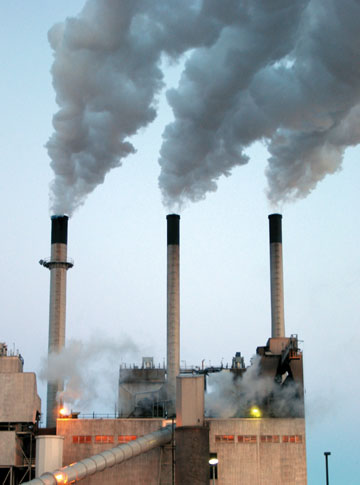( – promoted by lowkell)
A great article appeared in yesterday's Virginian-Pilot about the proposed coal-electric plant in the town of Dendron, Virginia, upstream (and upwind) from Hampton Roads on the James River.

The proposal is still early in the permit-seeking process, but the tiny, destitute town and its surrounding population have already formed staunch and angry Pro- and Anti- groups. The article suggests that, most unfortunately, these groups are noticeably arranged along racial lines.
If all goes as planned, the plant's twin 650-foot emission stacks – nearly 100 feet taller than the Washington Monument – will rise just behind the backyards of Main Street. Where tranquil woods now stand, bulldozers will muscle mounds of fly ash that will rival Mount Trashmore in Virginia Beach. Each week, more than 500 boxcars of coal will clatter in around the clock.
The dilemma cleaved Dendron largely along racial lines, a fact residents say they hate to mention, but then do. The community, roughly half black and half white, had a long history of getting along – until blacks saw the plant as opportunity and whites saw it as disaster.
Suddenly, conversations grew testy between old friends. "Yes" and "no" signs were swiped out of yards. Mundane town meetings turned into accusation-filled marathons.
While it's tempting to start trying to explain this apparent phenomenon, that seems unwise. Pushing this story into a pre-existing narrative formed by the local and national history of racial politics is unlikely to isolate or clarify anything useful about the specific issue of whether this plant ought to be built, and whether it ought to be built in Dendron.
Likewise, the story offers some other ways to understand what's happening there now. For instance, the town was created as a byproduct of an earlier resource-extracting industry, and the echoes of that history are very clearly present still:
The town in the shadow of the smokestacks is broke. It's been that way since the saw mill packed up. Born as a company town in the 1880s, Dendron – Greek for "trees" – once boomed with 3,000 residents and scores of stores, banks, hotels, restaurants, even a skating rink and movie theater. But when the virgin forests gave out and the Great Depression hit, the Surry Lumber Co. abandoned Dendron – taking more than just jobs. Company buildings were dismantled, along with the water and electricity systems. The ice plant was moved to Wakefield. The iron tracks of the railroad were wrangled right out of the ground. A 1931 fire finished off most of what remained – destroying 21 buildings on Main Street.
Dendron has limped by ever since. Last year's town operating budget was $50,000. Sidewalks are buckling. The population is shrinking. The water system, installed to replace the company one, is leaking so badly that the state is threatening $25,000-a-day fines. The repair bill could reach $2 million. At one recent meeting, the mayor put it like this: "We're hooked up to life support. This is a critical time." Enter ODEC, with a plan to buy the lumber mill site [and build a power plant], and an offer to the town that, at least initially, sounded like a savior: a $10,000 zoning application fee, $600,000 toward water repairs, $65,000 for new sidewalks, $100,000 for a picnic and playground area. The co-op even replaced the worn-out copier in Town Hall. The real windfall, however, would come in property taxes – $1.6 million a year to Dendron and $22 million to surrounding Surry County.
Any strategist prefers to have the choice of where and when to fight. Here we see a rather cunning move by the power company in selecting an incredibly vulnerable community with a distant memory of times being better when Dendron was a “company town.”
In such a setting the utility could probably hope to have the thing well underway before a resourceful opposition appeared. And indeed, the company’s proxies appear to have swept the most recent town council elections. Of course, many other officials will need to sign off before the plant is reality. This plant will directly affect millions of Virginians living in Hampton Roads. It's upstream and upwind from a huge population center, several wildlife refuges, the lower Chesapeake Bay, and major drinking water sources. Effective opposition first requires awareness.
People should be talking about this plant not only in Dendron, but in all Seven Cities of Hampton Roads, and on the Peninsulas and the Eastern Shore.



![Monday News: Trump’s Lunacy Pushes China, Russia, India, etc. Together; “Happy Labor Day. Donald Trump and Elon Musk Are Screwing Workers.”; “Where is the [media’s] intense focus on Trump’s failing health?”; ““Trump says he is not a dictator. Isn’t he?”](https://bluevirginia.us/wp-content/uploads/2025/09/montage0901-238x178.jpg)










![Monday News: Trump’s Lunacy Pushes China, Russia, India, etc. Together; “Happy Labor Day. Donald Trump and Elon Musk Are Screwing Workers.”; “Where is the [media’s] intense focus on Trump’s failing health?”; ““Trump says he is not a dictator. Isn’t he?”](https://bluevirginia.us/wp-content/uploads/2025/09/montage0901-100x75.jpg)